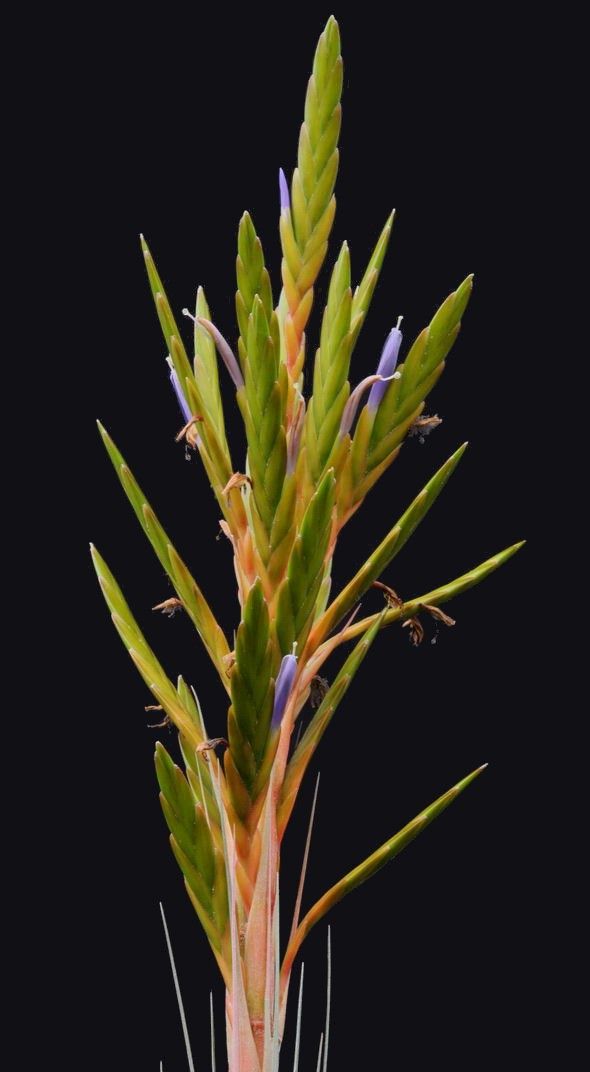
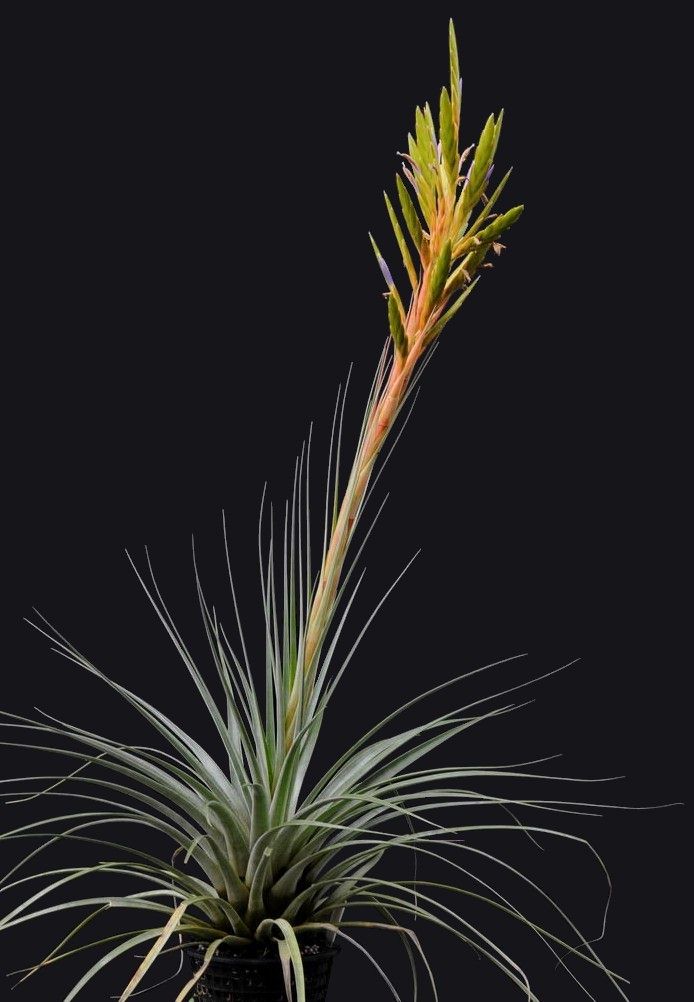
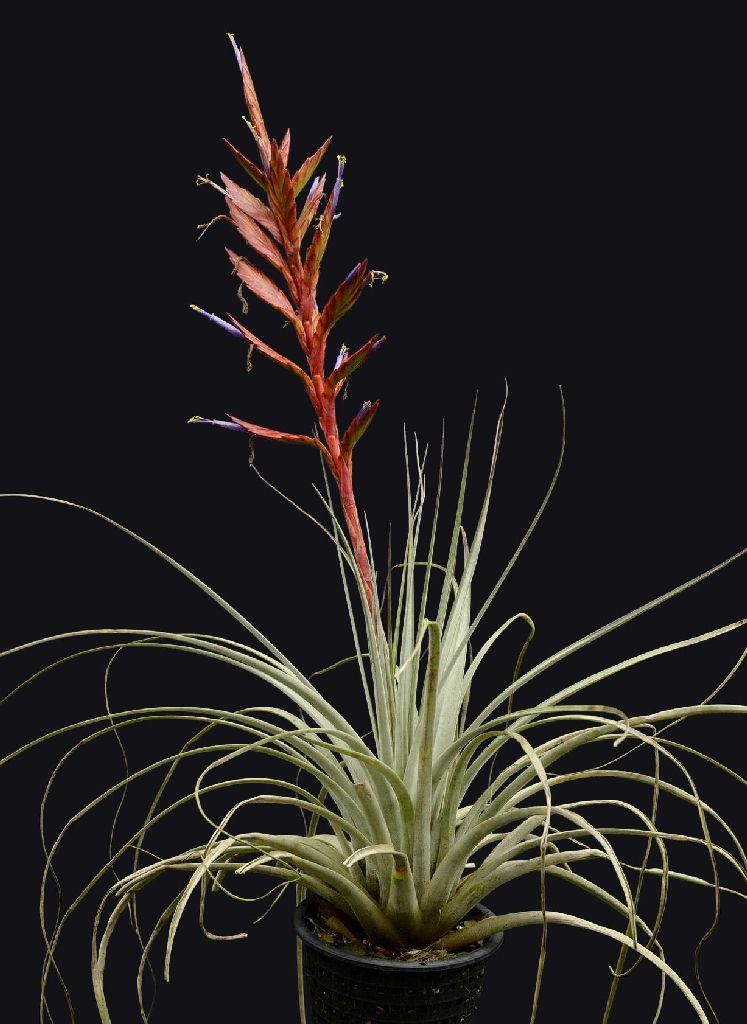
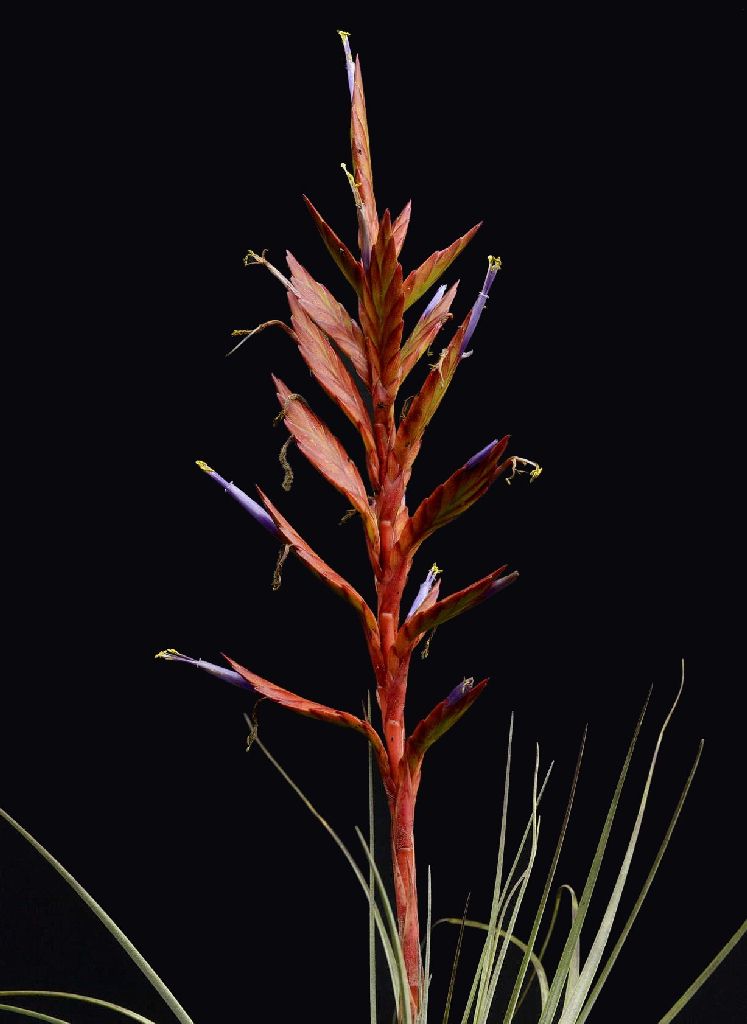
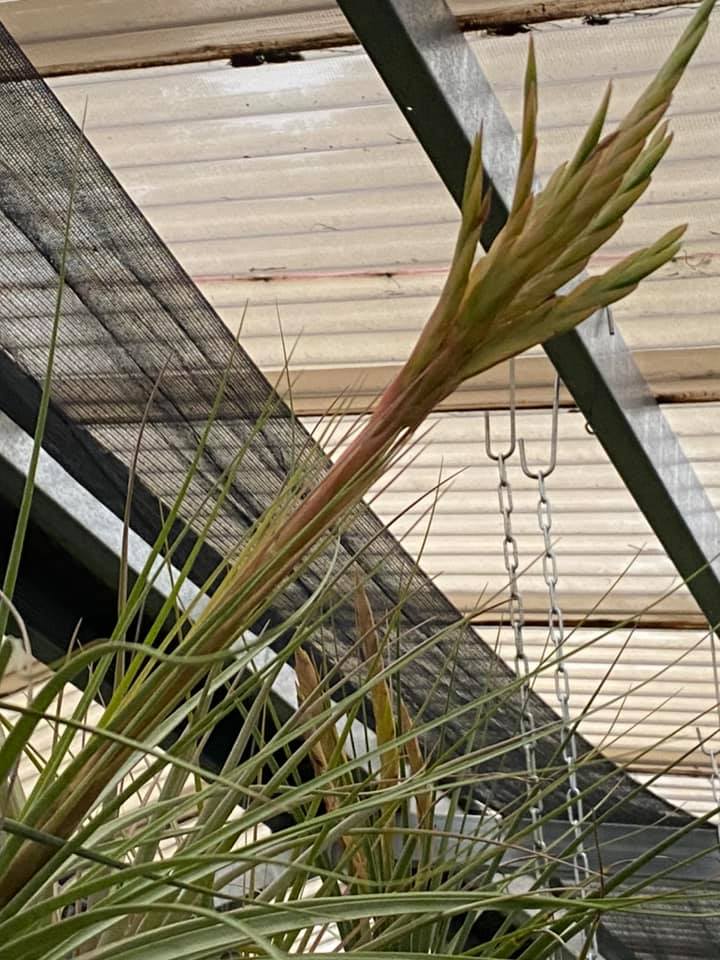
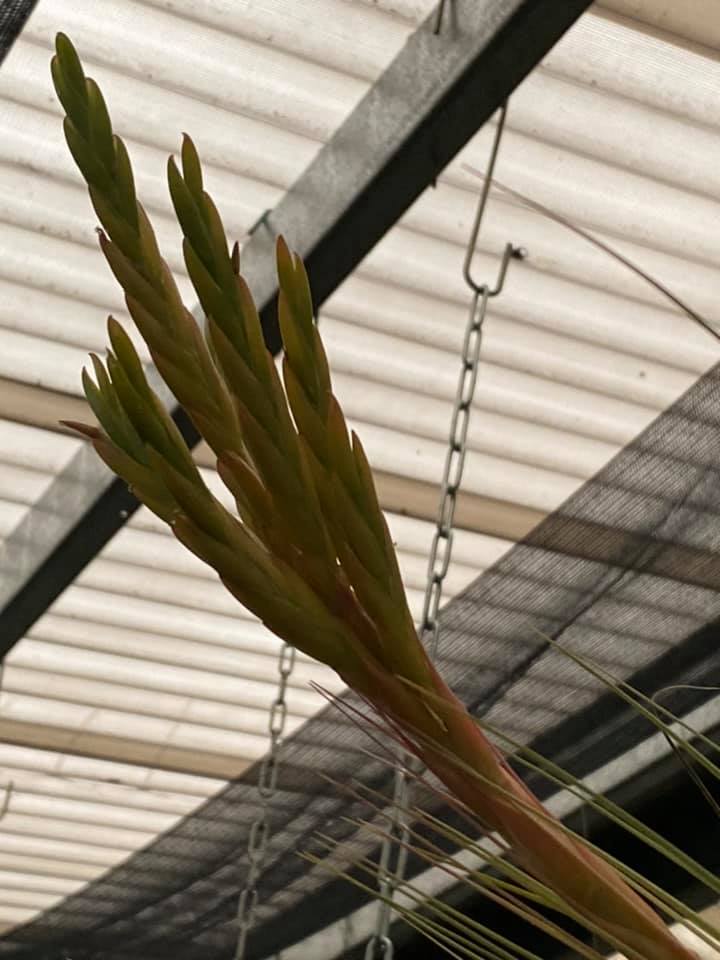
PLANT- Stemless, flowering to 90cm high, leaves numerous, erect, wide to 40cm high, in diameter 60cm, leathery.
LEAF SHEATH - Clearly seen, to 9cm long, 4cm wide, elliptic, almost spoon shaped arched, inside intensive dark brown, very dense with fine brown scales, outside lighter brown, weaker particularly at the base with fine brown appressed scales, the top third abundant grey scales in blotches.
LEAF BLADE - At the base 2.5cm wide, to 35cm long. thin triangular, long, linear, bent outwards, leaves near the centre erect with tapering tips, edged, particularly the bottom part bent into a groove, inside nerved and in the bottom half with one nerve transfered to the side, prominent middle nerve, dark green, looks grey by means of strong scales, inside dense fine grey scales, outside stronger scales.
SCAPE - Erect, to 35cm long, as long or longer than the leaves, lcm diameter and round, half covered by the sheath of the imbricate stem bracts and part is visible, naked, red, shiny.
SCAPE BRACTS - The lower ones similar to the leaves, and with erect, linear blade, which becomes gradually shorter towards the top, naked, shiny red and becomes similar to the primary bracts, densely adjacent to the stem.
INFLORESCENCE - Widely exceeds the rosette, bipinnate, to 25cm long, 13cm diameter with up to 20 compound spikes, the bottom ones at an angle of 70 degrees, the top ones erect.
SPIKE - To 9cm long, 1.5 cm wide, broad lance-like acuminate, complanate, the flat side of the rhachis affiliated, the erect 3cm long with small (8-10mm long) sterile bract covered stem and rhachis angled, with 5-7 sessile, scentless flowers, more sterile at the base, compound.
PRIMARY BRACT - Similar to the flower bracts, shorter than the stalk of the spikes, with its sheath covering the stalk, the most bottom ones tipped.
FLOWER BRACT - Erect, densely imbricate, wholely covering the rhachis, 2 to 3 times as long as the internodes, 2.8cm long, l.7cm, wide elliptic with hooded tip, exceeds the sepals by 3-5mm and almost enclose them, leathery, keeled, double keeled at base, inside strongly nerved and with fine punctulate scales, outside naked, shiny red (no.32 crimson) or green yellow (no.81 lettuce green) with red edges and tips.
SEPALS - Lance-like acuminate, to 2.6cm long, 6mm wide, thin membranous, the back pair joined for 2/3rds and wing keeled, inside nerved and tiny punctulate scales, outside naked, shiny greenish yellow with red tips.
PETAL - An erect tube with few bent outwards tips, tongue shaped with bent recess, more or less acuminate, to 5cm long, the top part 9mm wide, the base narrowing to 3mm, top 2/3rds violet (no.52 Aster violet), bottom whitish.
STAMENS - Exceed the flower by 5mm, 3 unequally long, to 5.lcm long, the top half lmm wide flat oval, lilac, towards the bottom ribbon like, thin becoming white, the bottom often twisted. Anther 2.5cm long, 0.75mm wide, linear dark brown, loosely joined l/3rd from the bottom. Style - Exceeds the flower by lcm, to 5cm long, white. Stigma small, 2mm high, 1mm wide. Lobes erect with few papillae, light green, Type 2 Brown & Gilmartin.
OVARY - 6mm high, 3mm wide, cone shaped, in cross section triangular, pollen egg yellow and 90% fertile.
HABITAT - GUATEMALA, Dept. Quiche between St. Cruz de Quiche and Zacapula at 2000m. leg Werner Welz 2269, March 1989, Holotype WU
Named after Werner Welz, Bromeliad gardener at Botanic Gardens, Hamburg, Germany
Differs from T. fasciculata v. clavispica in
Flower stem much longer.
Spikes larger spreading - geniculate.
Floral bracts larger.
Sepals larger.
Differs from T. rodrigueziana in
Spikes with 3cm stem.
Spike spreading then erect.
Internodes on the spike longer.
Floral bracts exceed sepals by 4mm.
Sepals joined higher.